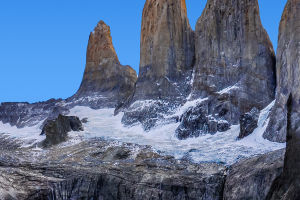Mount Fuji is a classic symbol of Japanese spirit and culture. Regarded as a sacred mountain, it holds a special place in the hearts of the Japanese people as a beautiful and solemn natural wonder.
With its majestic and solitary equilateral triangle shape, it has become the iconic representation of Japan and a popular destination for tourists from all over the world.
While its beauty is undeniable, Mount Fuji is also a dangerous mountain. Its history can be traced back to around 200,000 years ago when a volcanic cone was formed due to volcanic eruptions. Over time, it has undergone several eruptions, resulting in changes to the shape of the mountain and its surrounding environment.
While Mount Fuji is now considered a dormant volcano, it is still regarded as active due to experiencing minor eruptions and earthquakes over the past few hundred years.
According to a geological survey conducted by the Seismological Institute of the University of Tokyo, Mount Fuji has experienced more than 180 volcanic eruptions since 5600 BC. The mountain erupts on average every 30 years, but the last major eruption occurred in 1707.
Statistics show that there are currently about 1,500 active volcanoes in the world, with more than 7% of them concentrated in Japan. While Japan only accounts for 0.25% of the world's total land area, it has a proportion of active volcanoes that is 28 times higher than the global average. In fact, Japan has as many as 110 active volcanoes, including uninhabited islands and submarine volcanoes.
To minimize the damage caused by volcanic eruptions, Japan has established a national volcanic eruption forecasting joint meeting to monitor 47 of the 110 active volcanoes around the clock, with Mount Fuji being a key monitoring object.
As one of the world's most famous volcanoes, if Mount Fuji were to erupt again, it could cause the following consequences:
1. Volcanic ash and smog: A major eruption of Mount Fuji may produce a large amount of volcanic ash and smog that could spread to surrounding areas, causing problems such as reduced visibility and traffic jams. Volcanic ash could also affect agriculture, animal husbandry, fisheries, and other industries, threatening the stability of the local economy.
2. Destruction of the ecosystem: Mount Fuji is an important nature reserve with a unique, complex, and fragile ecosystem. Volcanic eruptions can have profound effects on local biodiversity and ecosystems, and could cause irreversible damage to the flora and fauna.
3. Nutrient replenishment: While the impact of volcanic eruptions on human society is generally negative, volcanic ash is rich in nutrients. Fertilizers made from volcanic ash are highly suitable for crop growth and are used in many parts of Japan and around the world.
While Mount Fuji is a beautiful and iconic natural wonder that represents Japan's spirit and culture, it is also a dangerous mountain with the potential to cause significant damage to the environment and local communities. With proper monitoring and precautions, Japan can continue to appreciate and protect this precious natural resource for generations to come.


